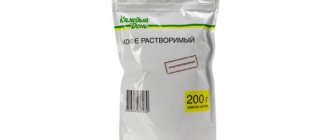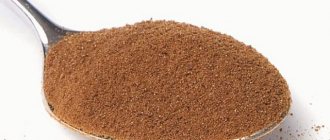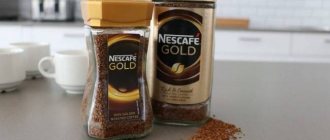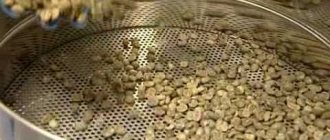29.03.2020
When labeling coffee, entrepreneurs must take into account a whole list of requirements. They are presented by regulatory documents and technical regulations under which the food product falls. Compliance with established rules and regulations will allow you to organize the legal sale of goods. Violation of the requirements of technical regulations, standards and misleading consumers regarding the composition of the product, its properties, becomes the reason for bringing the perpetrators to justice with punishment in accordance with the provisions of the Code of Administrative Offenses of the Russian Federation.
Our CA specialists are ready to assist in label development. All necessary procedures will be organized in full compliance with the requirements of regulations, standards and legislation.
Labeling requirements
Commercially available coffee can be roasted (beans or ground), instant (powdered, granulated, freeze-dried), coffee drinks and other types of products. Coffee falls under the TR that establishes requirements for products and their labeling - 021/2011 and 022/2011.
In accordance with the provisions of the regulations, coffee labeling must include the following information:
- name of food product;
- compound;
- quantity of products per packaging unit;
- date of manufacture;
- duration and storage conditions;
- name and location of the manufacturer;
- name of the company representing the interests of the manufacturer;
- the nutritional value;
- single sign “EAS”;
- bar code (displayed at the request of the manufacturer);
- information on voluntary confirmation of compliance;
- trademark;
- designation of a document by which the product can be identified.
The transport container is marked with a trademark, product name, type of coffee, net weight, shelf life.
Appendix B (mandatory). Method for determining organoleptic indicators
B.1 Scope
This method applies to instant coffee and establishes a method for determining organoleptic characteristics.
B.2 Measuring instruments, auxiliary devices, utensils, materials
Non-automatic laboratory scales in accordance with GOST OIML R 76-1 with a maximum weighing limit of 500 g of the 3rd accuracy class. Electric stove in accordance with GOST 14919 or gas burner. Glasses types N(B)-1(2)-250 THS (TS) according GOST 25336. Porcelain glass with a capacity of 250 cm in accordance with GOST 9147. A cup made of porcelain or glazed ceramics with a capacity of 150-250 cm. Cylinders 1(3)-250 in accordance with GOST 1770. White paper in accordance with GOST 6656, GOST 18510. Glass rods in accordance with GOST 21400. Liquid glass thermometer with a measurement range from 0°C to 100°C, scale divisions of no more than 1°C according to GOST 28498. It is allowed to use other measuring instruments, auxiliary devices, utensils and materials, the metrological and technical characteristics of which are not lower than those specified .
B.4 Conducting analysis
Organoleptic indicators are determined in the following sequence: appearance, color and aroma of the dry product, aroma and taste of the drink.
B.4.2 Determination of aroma and taste of a drink
A drink is prepared, for which 2.5 g of the analyzed coffee sample is placed in a glass or porcelain glass with a capacity of 250 cm and dissolved with stirring in 150 cm of hot boiled water at a temperature of 96°C-98°C. The aroma of the drink is immediately determined. The drink is cooled to a temperature of no more than 55 ° C, after which the taste of the drink is determined. If there is disagreement in the assessment of the organoleptic characteristics of coffee, the manufacturer’s recommendations, which have priority, are used to prepare the drink.
Applying the “EAS” mark
The unified “EAC” mark must be present on a product that has passed the procedure for confirming compliance with TR requirements. The sign is displayed taking into account the requirements of the regulations:
- labeling is carried out after passing the safety confirmation procedure, but before the product is released for sale;
- the chosen method of applying information should ensure clarity of display and its indelibility;
- the “EAC” sign must be placed on each unit of product put on sale.
Process
This category is quite important for understanding what kind of coffee you will encounter in a given package. Processing is what happens to coffee between the harvesting of the ripe coffee cherries and the packaging of the dry coffee beans. There are four main ways to process coffee harvest:
- Wet processing / Washed Process (Parchment-Dried)
- Natural Drying / Natural Process (Cherry-Dried)
- Honey Process (Mucilage-Dried)
- Wet-Hulled (Seed-Dried)
Each of these methods has a huge impact on the taste of the coffee. In countries such as Colombia, Guatemala and Kenya, coffee is predominantly processed using the wet method. In this process, the skin of the fruit is removed and the coffee is fermented and washed. This treatment produces a pure coffee taste with greater sweetness and aroma.
Natural drying is common in places without access to much water, such as Yemen and Western Ethiopia, or in places where coffee is grown on a large scale, such as Brazil. Using this method, the coffee is dried with the casing on, resulting in the beans acquiring berry aromas.
Honey processing is a mix of the first two options - coffee beans are husked from the fruit, but the remaining layer of sticky coffee juice (so-called coffee honey) is not washed off, and the beans are dried along with it. This type of coffee is common in Costa Rica, El Salvador, and Panama.
The wet peeling method is mainly practiced in Indonesia.
Features of coffee labeling
When developing a product label, the following rules and regulations must be taken into account:
- information about the physical properties of the coffee or the processing methods used must be included in the name or indicated close to it;
- the name is not allowed to reflect components that are not included in the product;
- All ingredients are listed in descending order. The word “Composition” should be placed before their reflection;
- provided that the components are included in an amount of 2% or less, they can be located in any sequence at the end of the list of raw materials used;
- Some components of commercially produced coffee or coffee drinks may contain ingredients whose consumption causes allergic reactions. Information about their presence is required to be reflected;
- nutritional value is given per 100 grams of dry product. The energy value is indicated in joules.
Two of them are mainly used on an industrial scale - Arabica and Robusta (Congolese coffee). They are considered the best varieties of coffee. In total, they account for 98% of world production, 70% and 30% respectively.
In turn, they are also divided into varieties depending on:
- grain quality
- country of origin
- commercial name
- property where the coffee was grown
- area where coffee was grown
- port delivery
- subspecies of the coffee tree (Typica, Bourbon, etc.)
- national classification system of the country of origin
All types of raw coffee can be divided into three groups
- African varieties: Kenyan, Ethiopian, Zambian and Guinean coffee
- Asian varieties: Yemeni, Indian, Vietnamese and Indonesian coffee
- American varieties: Costa Rican, Colombian, Cuban and Brazilian coffee
Classification of coffee by quality
A - highest quality
B - average quality
C - low quality.
Or the following designation is also acceptable: AA - the best coffee
AB - good coffee
BA – average quality coffee
BB - low quality coffee.
Different countries use their own classification and designation of coffee by quality.
Some coffees are processed manually. That is, the staff manually sorts the coffee beans, removing foreign bodies or defective beans. As a result, such coffee is labeled:
EP (European preparation) - European preparation, which allows for the presence of up to 8 defects per 300g of grain.
AP (American preparation) - American preparation, which allows for up to 23 defects per 300g of grain.
Classification of coffee by place of growth
SHG (Strictly High Grown) - coffee grown in the mountains - from 1500-2000 meters above sea level. m.
HG (High Grown) - grown in the foothills at an altitude of 1000-1500 meters above sea level. m.
CS (Central Standard) or MG (Medium Grown) - grown on the plain
HGW is coffee grown in the foothills and wet processed.
SHGW is coffee grown on mountain plantations and subjected to wet processing.
Grain hardness classification
SHB (Strictly Hard Bean) - very hard, grains of the highest degree of hardness. This is an elite Arabica grown at an altitude of more than 1400 meters above sea level. m.
HB (Hard Bean) - hard grain,
HB or MG – grains of high hardness, growing at an altitude of 1200-1400 meters above sea level. m.
MHB grains of medium hardness from lowland plantations.
LGA is the lowest category of coffee.
Recently, coffee has been gaining popularity, on the label of which you can find the designation “Organic coffees” (organic coffee). This means that the coffee is grown without the use of any chemicals.
Each country has its own quality and selection criteria, and quite often they do not coincide. So, for some, the primary indicator is the height of the coffee trees, for others - the size and color of the beans.
In addition to the classification of coffee by country, there is a division of varieties according to age, taste and method of growing beans:
“Organic coffees” are environmentally friendly coffee varieties grown without the use of chemicals or other means for treating trees. Such labeling must be confirmed by appropriate certificates, and since such documents, and the production method itself, are very expensive, coffee of these varieties is highly expensive.
“Mild” (translated into Russian as “soft, light”) - this category includes the best varieties of Arabica, which have a soft and absolutely weak taste. Grains with this marking are considered high-mountain, although for this they need to grow at an altitude of at least 500 meters above sea level. m.
“New crop” and “Old crop” – classification of the degree of freshness of grains.
“New crop” – fresh coffee beans, packaged immediately after harvesting and processing.
“Old crop” is last year’s harvest, the remains of which were not sold out yet.
There is also a marking based on the age of coffee beans:
“Mature”, “Old” - 1-3 years of aging of grains in special warehouses.
“Vintage coffee” or “Aged coffee” – 6-10 years of aging of beans.
The main indicator by which coffee is classified into varieties is the presence of defective beans and mineral impurities in it.
Applying information based on distinctive features
Labeling of instant coffee, if desired by the consumer, may include information on the distinctive features of food products. When reflecting it, it is necessary to have appropriate documentary evidence.
An example of such a distinctive feature is the absence of genetically modified organisms in the product. To receive confirmation, the manufacturer must provide its product for research. Based on the results obtained, which are included in the test report, it is already possible to reflect the relevant information.
Completed test reports or certificates must be kept by manufacturers or organizations that release food products for sale. When conducting checks regarding the quality of a product and the appropriateness of its labeling, representatives of regulatory organizations may request such documentation. Indication of distinctive features without a supporting document may be regarded as misleading the consumer.
You can download GOST 32776-2014 in the following versions:
Date added to file version:Downloads:Size:Link to download page:23/01/2016 01:370.61 MB
- Page 1
- page 2
- page 3
- page 4
- page 5
- page 6
- page 7
- page 8
- page 9
- page 10
- page 11
- page 12
- page 13
- page 14
- page 15
- page 16
Articles, comments, answers to questions: GOST instant coffee
Open the document in your ConsultantPlus system:
Thus, one of the customers turned to a non-governmental expert institution with a request to examine the batch of Colombian instant coffee he was purchasing. The Institute established the high quality of the product, compared it with GOST standards for domestic instant coffee and issued the customer a special quality certificate, which facilitated the rapid sale of the batch on very favorable terms.
Regulatory acts: GOST instant coffee
Open the document in your ConsultantPlus system:
Put into effect
Open the document in your ConsultantPlus system:
Put into effect Friday, January 01, 2016
Features of marking taking into account the requirements of standards
Taking into account the requirements of GOST, labeling of coffee beans or other type of product must include the words “roasted”, “beans”, “ground” in the name. The label may also contain other information. A prerequisite is the absence of information that could mislead the consumer. When marking transport consignments, manipulation signs may additionally be reflected:
- protection from moisture;
- protection from sun exposure;
- temperature limits;
- sealed packaging;
- stacking ban and others.
Interesting Facts
- The University of Bremen is named after the grandson of the brand’s founder, Klaus Jacobs, who was also a philanthropist and founder of a Swiss charitable foundation.
- The brand's first advertising appeared with the arrival of Walter Jacobs, who proposed new packaging with an image of a bag of coffee and the inscription “Jacobs Caffe” in a stylized Gothic font in 1930. And in 1931 he came up with the first slogan - “Incredible pleasure to the last drop.”
- The first radio advertisement was aired in 1954. The new slogan “Jacobs wunderbar” was literally on everyone’s lips. And the first television commercial appeared in 1959, its heroine was Grandma Sofia, offering her grandchildren coffee “with the aroma of home.”
- The familiar golden crown on Jacobs packaging appeared in 1966, when the products began to be exported to Austria, Switzerland, and Denmark. The crown symbolized “royal quality”, and not the aristocracy of the brand, as its appearance is sometimes interpreted. The owners of the brand never claimed to be elite, but positioned their coffee as a mass-market product. That's why Jacobs had the largest distribution network in Europe in the 60s.
Barcoding coffee
A bar code is a graphic object made of stripes of a color contrasting to the main background. It makes it possible to encode a unique sequence of numbers. This sequence allows you to obtain information about the place of origin of the product and the product itself. To apply a code to packaging, the manufacturer must register it. Only in this case will the sequence of numbers used, converted into a graphic object, be unique. The presence of a barcode allows you to:
- simplify product accounting;
- promptly identify excess and shortage of goods;
- speed up the procedure for shipment of goods and its acceptance;
- automate many processes in the enterprise.
When registering a barcode, an entrepreneur can choose a format for use within the country or internationally. The second option is acceptable for those types of products that are produced for the purpose of export outside the Russian Federation.
Tip #3. Selecting the degree of roasting
The degree of roasting plays an important role in determining the taste. The important thing to understand here is that there is no correct degree of roasting. Roasting is as follows:
- weak;
- average;
- strong;
- maximum.
This is only a general classification, since different countries have different terminology. You need to know one thing - the higher the degree of roasting, the richer the taste of the finished drink. Always look at this parameter on the packaging so as not to find yourself in a situation where your coffee turns out to be too bitter. Remember that most often the Italian product is the most deeply roasted. Other producing countries produce completely different ground coffee.
Documents for application and procedure for providing services
Entrepreneurs applying to the certification center provide:
- registration documents, TIN;
- information about the labeled product;
- manufacturer information;
- regulatory documents for coffee.
A manufacturer or importer contacts our specialists with an application and a package of documentation. After the consultation, an agreement is drawn up and services for developing product labels are provided. Each entrepreneur who applies can receive assistance not only in product labeling, but also in barcode registration, confirmation of compliance, and resolving many issues related to organizing business activities.
We are waiting for your applications!
Name
Many small producers name their coffees after the farm or village where the coffee is grown. If you see “finca” or “estate” on a pack of coffee, it means the coffee comes directly from a specific location with a very high degree of traceability. Also, the name can be assigned to the next, larger link in the chain. This could be a cooperative that blends, processes and packages coffee from nearby farms and villages. For example Cenfrocafe in Peru. Or the place where the coffee is transported for processing after harvesting - for example, Kigeyo in Rwanda. Less commonly, coffee may be named after the roaster in which it was roasted before packaging.











